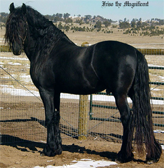Horse Insulin Resistance Testing – Full Article
Horse Insulin Resistance Testing – Owners Help
Horse Insulin Resistance Testing – Cortisol – Skip It
Horse Insulin Resistance Testing – ACTH
Horse Insulin Resistance Testing – New Standard Way
Horse Insulin Resistance Testing – Pregnant Mares
Horse Insulin Resistance Testing – Tubes to Use
Horse Insulin Resistance Testing – Where to Send
Horse Insulin Resistance Testing – Results – How to Read
Horse Insulin Resistance Testing – Equine Insulin/Glucose Ratio – No Value
Horse Insulin Resistance Testing – MIRG/RISQI – No Value, Leptin – No Value
Horse Insulin Resistance Testing – Retest
Horse Insulin Resistance Testing
Things to know prior to testing – What can I do as an owner to make testing more accurate?
The horse Insulin hormone is the key hormone to get tested, but if you are concerned enough to test, also check the Glucose, total T4 and the ACTH (if suspect Cushings).
If you suspect Cushings, always test the Insulin at the same time. Research is showing that Cushings may be occurring earlier and earlier in horses due to high Insulin damaging Pituitary cells. Also, ACTH at high levels interferes with the Insulin function leading to high Insulin resulting in Equine Insulin Resistance. Your horse can have Equine Insulin Resistance or Equine Cushings or both at the same time.
Special tubes are required and special handling of the blood is needed for accurate numbers. Poor handling in any step will yield false numbers and that leads to your horse not getting the correct therapy.
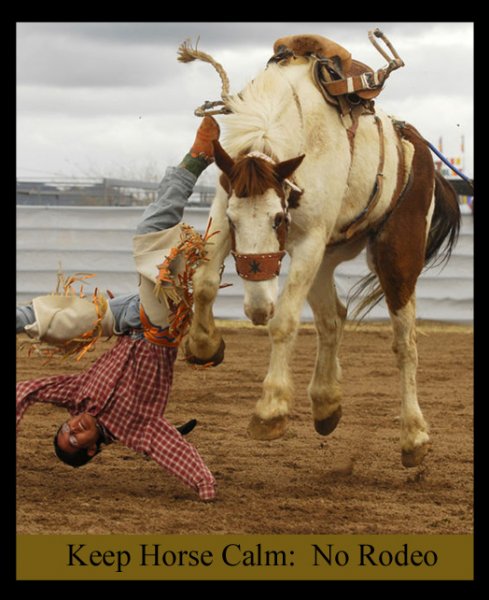 Keep your horse as calm as possible – maintain routine – you know the best ways to do that – a rodeo to catch the horse will falsely elevate hormones.
Keep your horse as calm as possible – maintain routine – you know the best ways to do that – a rodeo to catch the horse will falsely elevate hormones.
Tell your doctor if the horse is sick.
- Fevers, current Laminitis is enough stress to elevate Insulin and ACTH, so we struggle to tell if high numbers are true or if the numbers are up from sickness.

- Pain of any kind raises ACTH and Insulin in all animals. We have seen, in our practice, 200 point drops in ACTH in less than one week, just by providing comfort to the feet. The horse did not have Cushings, just a pain jump in ACTH. Often, horses are put on Pergolide too quickly due to pain ACTH elevation.
Tell the doctor if on medication. For example, Bute/Banamine/Aspirin will falsely lower horse Thyroid blood levels.
![]() Click here for article on Bute’s effect on Blood Thyroid Tests.
Click here for article on Bute’s effect on Blood Thyroid Tests.
Many IR horses have SUBOPTIMAL Thyroid levels – they run at the bottom of the normal range, around 1.3 for example (At Cornell, range of total T4 is 1-3), and need to get near 2.7. Why do you want your horse in the normal range? In a Tufts Vet School study, normal thyroid levels were proven to help insulin sensitivity and help with nerve repair in horses’ sore feet.
![]() Click Here for more information on Equine Insulin Resistance Thyroid Powder.
Click Here for more information on Equine Insulin Resistance Thyroid Powder.

Does my IR horse have a pancreas problem causing laminitis?
No, a February 2018 article in American Journal of Veterinary Research (AJVR) from Tennessee’s Veterinary School found that the IR horse has the same number and size of insulin producing cells in the pancreas as a normal horse. Also, the IR is NOT pouring out high insulin from an abnormal pancreas. This now turns the focus more on the sites of tissues that insulin works on – fat cells/laminae with this valuable new information. So treatments directed at the pancreas would not be helpful in horses with IR/IR laminitis.
Click here for an article in the AJVR on insulin, glucagon, and somatostatin in the pancreas of horses with and without Insulin Resistance.
Cortisol testing is a waste of time and money. Skip it. Multiple references say the test is “Not definite”, “too variable” or “lacks consistency”.
- Equine Internal Medicine, 2004
- J. of Vet. Internal Medicine, 1996
- Equine Medicine and Surgery, 5th Edition, 1995

ACTH testing and time of year.
- ACTH hormones in horses can jump seasonally from late July to November (peak August, Early September). This makes testing during this time challenging – is it up due to season or due to Cushings? Your Vet can work with you and may still want to test ACTH to see if the medication has any effect. No seasonal changes are seen with Insulin.
- You do not need a Dexamethasone Suppression Test to diagnose Cushings. If your horse has Insulin Resistance, the Dexamethasone could trigger Laminitis – you need to know that fact.
- Test in the morning when ACTH peaks.
- A recent university study shows that all horses over 13 years old had enlargement (Hyperplasia) of the Pituitary but some had higher ACTH and some were normal. If your horse is Insulin Resistant as a youngster, test for ACTH as it gets older, and especially after 13 years old.
- Yearly evaluation of ACTH hormone is best accomplished in the spring time.
Leptin Testing (At Cornell). What this hormone does in Insulin Resistance, Cushings, older horses, sick horses, painful horses at this time is in the investigation stage. It is unknown how it effects levels of hormones in a variety of different conditions, but it will be interesting to see how studies develop. Leptin, in a Horse Glucose Challenge study, dropped by 17% on an Oral Grain Challenge but jumped up 33% in an IV Glucose Challenge. This shows you we have lots to learn about it. J. Animal Science. Dr. M. Gordon, 2006.
![]() Click here: Does My Horse Have Horse Diabetes?
Click here: Does My Horse Have Horse Diabetes?
New, standard way to test horses with Horse Insulin Resistance: Oral Glucose-Insulin Response Test – What the best and most accurate.
Day Before The Test
(Example: Tuesday and testing Wednesday morning)
- Do not exercise your horse after 1:00 PM. If usually ride, do it in the morning. After 1:00 PM, do your normal routine of turnout, dry lot, or stall.
- At 7:00 PM, bring into barn stall or dirt lot – need to be off the pasture that night. Only feed hay and water. *NO GRAIN AT ALL * NO SNACKS * NO OILS*.
Day Of The Test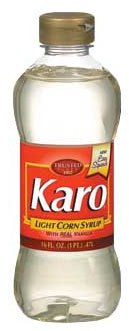
Karo Syrup in the morning using Light Karo Syrup at .15 ml per kilogram.
Protocol via:
- Dr. N. Franks, Head of Equine Medicine, Tufts Veterinary University. Ocala Equine Conference 2011.
- U. of Minnesota College of Veterinary Medicine. Equine Genetics Genome Lab.
|
Weight |
mls of Karo |
Karo Facts: 1. 30cc of Karo is only 120 calories. A 1000 pound horse getting 70cc gets only 280 calories. This is only about what is in a Snickers bar. This is why this test is safe. 2. Karo is corn syrup – not high fructose corn syrup. 3. Karo has been around since 1902. 4. Light Karo is 1/3rd more calories than Lite Karo. Light Karo has the red label to use on horses. 5. Karo is zero in fat or protein. |
|
1200 lbs. |
82 |
|
|
1000 lbs. |
70 |
|
|
800 lbs. |
55 |
|
|
600 lbs. |
41 |
|
|
400 lbs. |
28 |
|
|
300 lbs. |
21 |
|
|
200 lbs. |
14 |

Divide pound weight by 2.2 to get kilograms. A 1000 pound horse is about 450 kilograms.
Better to give a little more than too little. 80 ml. in a 1000 pound horse will not create false highs, but 50 ml. in a 1000 pound horse will create false lows.
This “Dynamic” test has been used for decades in people. We missed many true Insulin Resistant horses when fasting tests on only hay. This shows the real world status of your horse.
Dynamic testing is “direct measures of the cellular sensitivity and are considered to be the Gold Standard for diagnostic purposes.” Rutgers University, 2011.
2018 European Internal Medicine Consensus Validates Heiro Program
1. EMS (Equine Metabolic Syndrome) – not a disease, only a list of risk factors for endocrinopathic laminitis via high insulin. (Insulin Resistance).
2. Laminitis is the #1 clinical consequence of EMS.
3. 22% of horses in USA have EMS. #1 risk factor = obesity. Genetics is another big factor. 18% estimated to have it that are healthy, non-laminitis (inapparent but have it).
4. Oral Karo light syrup dynamic challenge test is the best test.
5. Cushings can cause insulin changes so if there are signs, need to test for it.
6. “Muzzles have added benefit of increasing forage time and exercise.”
Dr. Reilly: What we have pushed for over 10 years is now accepted – wonderful.
7. Metformin – oral bio availability poor in horses, does not have systemic effects on insulin.
8. Thyroid powder well tolerated, helps body mass to reduce, proven to help insulin sensitivity.
Dr. Reilly: What we have pushed for over 10 years is now accepted – wonderful.
9. Horses that improve insulin dysregulation rapidly might be able to resume restricted grazing relatively quickly.
Dr. Reilly: what we have pushed for over 10 years is now accepted – wonderful
![]() Click Here for Article
Click Here for Article
Dr. Reilly hint: A 1000 pound horse can take a maximum of about 30 ml. when squirting liquid into the mouth. Over 30 ml., it will dribble out and make it tough to tell if the horse got what was needed. So…squirt 30 ml, wait a minute, squirt 30 ml. more, wait a minute, squirt 10 ml. more.
You can feed hay after doing this Karo squirt and feed your grain/supplements AFTER the doctor has pulled the blood 60-75 minutes after your Karo squirt.
Example: Squirt Karo at 8:00 AM, test by the Vet at 9:00 AM, feed breakfast at 9:05 AM.
Do all you can to keep your horse calm and relaxed the night before and morning of the test. If it needs a buddy horse there, that is ok.
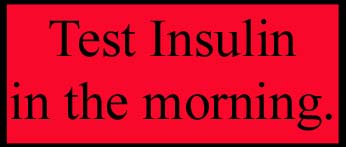
OOPS! I forgot to do the Karo and it is 11:00 AM. Can I still test? No – reschedule. If it is past 9:30 AM – reschedule.
OOPS! The Vet had an emergency and can’t come until 2:00 PM. Can I squirt Karo at Noon? No – reschedule.
OOPS! The Vet had an emergency and I did the Karo squirt at 8:00 AM and they cannot get here until noon – what now? Karo syrup is cheap – reschedule.
Horse Insulin Resistance in Pregnant Mares.
Oral Glucose Challenge tests have been done on mares and are safe to do. A study using 20 mares at the Virginia Tech Mare Center was done. In the study, Insulin peaked at late gestation (pregnancy) and dropped as foals were born and started to drink milk. They concluded Insulin levels were influenced by the reproductive stage. Dr. Hoffman JASCI 2003, Virginia Tech.
Some mares do struggle to maintain foals if they go into pregnancy already having Equine Insulin Resistance. If your mare is Insulin Resistant, test her Insulin prior to cover and starting at 8 months into pregnancy and at month 9, 10, and 11. We have programs to help these mares. High Insulin at pregnancy can lead to loss of the foal and Laminitis for the mare. ![]() Please see our section on Broodmares/Pregnant Mares.
Please see our section on Broodmares/Pregnant Mares.
For the test, why is there no exercise the night before?
- “Grain enhances Glucose oxidation during submaximal exercise in horses.” K. Hinchcliff. J. Appl. Physio, 2002.
- “Glycogen utilization during submaximal exercise decreased with increasing concentrates (grain).” A Jansson, Eq. Vet Journal 2002.
- “Fat supplemented diet may shift from carbohydrate oxidation to fat oxidation during exercise.” K. Greiwe, Eq. Nutrit. Physio, 1989.
- “Added fat can reduce heat production by 3% compared to Glucose.” J. Kronfield, Eq. Vet J., 1996.
- “Horses on a high sugar/starch feed had Insulin concentrations higher than when on high fiber diets.” R. Hoffman, J. Ani. Scie., 2003.
We need to eliminate variables in the grain, how fast or slow the horse eats it, types of different items in the grain influencing results, and exercise’s influence on metabolism and the effects of different grain on exercise effects.
Karo Syrup – What is it, why is it helpful, why is it the new standard for Horse Insulin Resistance?
![]() Karo syrup is made from regular corn syrup and contains no high fructose corn syrup. There are three types of syrup: Karo Dark, Karo Light, and Karo Lite. The type you need to get from your grocery store is the Karo Light which is in a clear bottle with a red label. Do not get Karo Lite with the blue label. Karo Light is called this due to its light color – it has the same calories (120 calories per 2 tablespoons) as Karo Dark Syrup. Karo Light Syrup is made of corn syrup, plus salt, plus Vanilla, and costs about $2.89 – the cost to do the Oral Glucose Insulin Response Test is only about $0.43 for a 1000 pound horse.
Karo syrup is made from regular corn syrup and contains no high fructose corn syrup. There are three types of syrup: Karo Dark, Karo Light, and Karo Lite. The type you need to get from your grocery store is the Karo Light which is in a clear bottle with a red label. Do not get Karo Lite with the blue label. Karo Light is called this due to its light color – it has the same calories (120 calories per 2 tablespoons) as Karo Dark Syrup. Karo Light Syrup is made of corn syrup, plus salt, plus Vanilla, and costs about $2.89 – the cost to do the Oral Glucose Insulin Response Test is only about $0.43 for a 1000 pound horse.
- This allows us to draw only one blood test instead of pre- and post- (2 samples = 2 times the cost) samples, and, there is no passing the stomach tube required, which would involve another veterinary fee.
- No IV drips of Glucose are needed and no 6-8 blood tests every 15 minutes for hours on end – saves time and expense.
- Karo Syrup is an owner’s best friend. It is easy to get, economic, done in 10 seconds, easy to do, repeatable to see progress, one bottle does many horses, a standardized test to compare horses in your backyard and to horses a thousand miles away.
- Safe Karo Syrup Oral Glucose Challenges on dozens of horses and ponies at three different veterinary schools in the United States have not had one problem with the product – no Laminitis in any horse. University of Minnesota’s Veterinary School has been using the Challenge on owner horses with past Insulin Resistance/Laminitis and had no problem. Why? Because the dose is relatively small. A 1000 pound horse gets only 70 cc (70 ml.) which is only 280 calories – about the same calories as in a Snickers candy bar! This is only about 1/7th the calories a normal adult human eats a day, so you can see why it is safe.
- University of Minnesota studies have uncovered many horses that were missed on past tests. Many horses only on hay, or fasted, or tested in the afternoon had Insulins under 40 uml, and was called normal, even though cresty, Laminitic easy keepers. Now: Karo Syrup Glucose Challenged – result 210 uml – confirmed needs help.

In-Depth Video on Blood Testing With Dr. Reilly:
Horse Insulin Resistance Blood Sample
Your Doctor will use a purple top (EDTA) tube to test the Insulin and ACTH at the same time or a plain red top tube (SST/Tiger tops/Red Tops with gel at the bottom are not to be used due to creating a false low hormone numbers by pulling hormone into gel.) to test Insulin and Glucose (and Thyroid if needed).

Blood tubes have expiration dates on them. Old tubes do NOT draw in the right amount of blood due to the seal of rubber at the top dies out, so air gets into the tube and the vacuum is less.
Purple top blood tubes are common and easy to get. Plain red top tubes require special ordering: Fisherhealthcare.com at 1-800-640-0670. 10 ml plain red top serum tube made of plastic. Catalog #: 02-683-60, MFG #366441.
If pulling for ACTH, Insulin, Glucose, and Thyroid need a purple and a red top. Pull red top first to avoid EDTA getting into red top. All tubes according to maker, require you to roll the tube gently 8 times for complete mixing and uniformity.
Next, put tubes in refrigerator to cool down. This slows the cells from metabolizing Glucose and from Insulin, Thyroid and ACTH levels from dropping (creating a false low number). Keep tubes upright in refrigerator to avoid contact with rubber tops. Do not lay on side.
 Next, after 30 minutes, spin blood in a centrifuge. You can use your car’s cell phone charger to power it. A Black and Decker converter plugs into the cord of the centrifuge and you will spin at 3000 rpm (standard high on most centrifuges) for 5 minutes. This allows the Vet to go on calls after blood drawn and not have to race back to the clinic, or have samples be unspun too long creating false low numbers. Glucose levels that are very low (65, 52, 28 mg/dl….) indicate the sample was mishandled, and results need to be tossed out and the horse retested. Very low Insulin numbers after a Karo Syrup Challenge (under 20 uml – Cornell) also would be suspect of the sample not being spun quickly or of a sample getting heated up in transit to the lab (not in a cooler as required).
Next, after 30 minutes, spin blood in a centrifuge. You can use your car’s cell phone charger to power it. A Black and Decker converter plugs into the cord of the centrifuge and you will spin at 3000 rpm (standard high on most centrifuges) for 5 minutes. This allows the Vet to go on calls after blood drawn and not have to race back to the clinic, or have samples be unspun too long creating false low numbers. Glucose levels that are very low (65, 52, 28 mg/dl….) indicate the sample was mishandled, and results need to be tossed out and the horse retested. Very low Insulin numbers after a Karo Syrup Challenge (under 20 uml – Cornell) also would be suspect of the sample not being spun quickly or of a sample getting heated up in transit to the lab (not in a cooler as required).
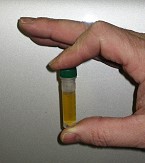 Once spun, serum or plasma is transferred to a plastic tube using a sterile syringe and needle or sterile pipette. You only need 2cc of serum or plasma to do tests. Do NOT use the blood tube to transport sample to lab. The rubber top on it will alter results. A hard plastic tube like in the picture also can be bought at Fisherhealthcare.com at 1-800-640-0670. Put the pulled off serum or plasma in the plastic tube and put back in the refrigerator.
Once spun, serum or plasma is transferred to a plastic tube using a sterile syringe and needle or sterile pipette. You only need 2cc of serum or plasma to do tests. Do NOT use the blood tube to transport sample to lab. The rubber top on it will alter results. A hard plastic tube like in the picture also can be bought at Fisherhealthcare.com at 1-800-640-0670. Put the pulled off serum or plasma in the plastic tube and put back in the refrigerator.
The samples can be frozen prior to shipping (required if ACTH being tested also) or refrigerated prior. They must be sent FedEx-Urgent – Next Morning – in a refrigerated pack.
Send samples only to labs that test Insulin dozens of times a week and with Board-Certified Clinical Pathologists on staff. There have been many problems with private labs. Take it out of the equation.

Only send in USA to:
- Cornell Veterinary School Diagnostic Lab – 607-253-3673
- Michigan State Veterinary School Diagnostic Lab – 517-353-1683
- Colorado State Veterinary School Diagnostic Lab – 970-297-1281
In Canada send to:
- Guelph Ontario Veterinary School – 519-824-4120 ext. 54530
In Europe send to:
- Royal Veterinary College (England) – 01707 666208
Why did we wait 60-75 minutes after Karo Syrup to pull blood? This is when Insulin peaks in horses – approximately triples from resting and peaks at this time. The peak of Insulin in normal horses is 60 unu (430.5 pmol)
- Dr. M. Roberts, Eq. Vet Journal – University of Bristol
- Dr. L. Lawrence, University of Kentucky
- Dr. S. Ralston, Rutgers University
- Dr. J. Bland, LSU Animal Science Dept.
Horses and humans both peak in Insulin at the same time, after meals and after a Glucose Challenge.
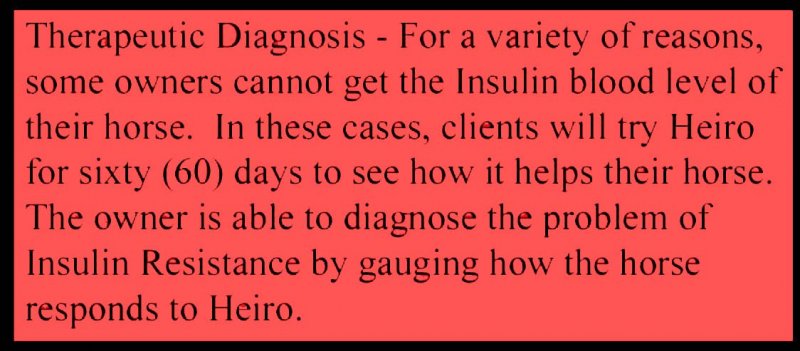
Results of Testing for Horse Insulin Resistance
Time frame – Insulin/Total T4/Glucose results in 48 hours from the time it is run at the lab. ACTH testing takes 72 hours. Some labs only test hormones 2 times a week, so if they run on Tuesday and Thursday, but blood arrives on Friday, it will not be run until next Tuesday. If you have the blood drawn on Monday and it is FedEx’d out that night, you should have full results by Friday of the same week.
The Ranges of Normal – Do They Apply?
Horse Insulin – these lab ranges on test results, are for fasting horses or horses not being challenged and on hay. They do NOT apply in this test. We know the maximum normal Insulin in horses when they eat a large grain meal or given Karo Syrup and if it is under that number, the horse is not confirmed Equine Insulin Resistant and it if is over that number it is a confirmed case. The chart, below, will tell you.
- Example: Insulin at Cornell run and Insulin normal range on the lab report is 5-20 uIu/ml and after the Karo Syrup Oral Glucose-Insulin Response Test it was 55 uIu/ml = horse normal, all good.
- Example: Test run as above, but results was 413 uIu/ml = confirmed Equine Insulin Resistance – needs a plan.
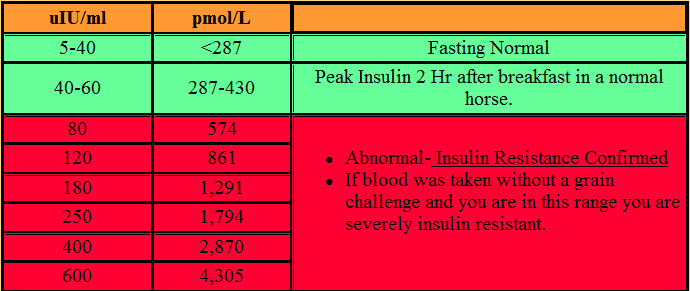
- To convert uIu/ml to pmol/L, multiply by 7.175.
- To convert pmol/L to uIu/ml, divide by 7.175.
**If your lab says result “over 200 uIu/ml”, DO NOT ACCEPT THIS! Ask them to titrate out to a real number. If your horse drops from 550 to 210, we will not be able to mark progress.
Again, no private labs, only ones listed.
Thyroid and ACTH – Not affected by Karo Syrup Challenge – Normal ranges are valid.
Glucose – with Karo Syrup Challenge, blood sugar (Glucose) will peak in the upper levels of normal lab numbers for normal horses and some early stage Insulin Resistant horses. Most Insulin Resistant horses will have Glucose levels above normal and some will have sky high Glucose numbers (over double maximum of the normal range). If they have other problems that jack up Glucose, such as Cushings, fever, infections or high stress, which pile onto the Insulin Resistance problem, this is when you see Glucose numbers over 200.
For Karo Syrup Challenge:
| Normal Glucose (in the lab range) |
Normal Insulin |
Horse is normal |
| Normal Glucose (in the lab range) |
High Insulin |
Insulin Resistance confirmed |
| Higher than normal range of Glucose |
High Insulin |
Insulin Resistance confirmed |
| Sky High Glucose (over 2 times Normal High) |
High Insulin |
Insulin Resistance confirmed (but other factors are in play) |
Normal Glucose in the lab range is under 115 mg/dl (Cornell Lab) or 6.4 mmol/L (Michigan State Lab).
Equine Insulin/Glucose Ratios – Why is it of no value in this test for Horse Insulin Resistance?
- This is a Challenge Test and normal horse Insulin ranges are not in play and not being used. Equine Insulin/Glucose ratios also easily affected by the time of day run, stress, fasting or not, time of last meal. Veterinary hospitals DO NOT use the Equine Insulin/Glucose ratio in the Oral Challenge tests.
- Glucose is affected not only by Insulin Resistance, but other times such as Cushings and fever. This will throw off the ratio. Horse Insulin/Glucose ratios are not reliable in Equine Cushings because this disease can elevate Glucose to over 200. Cortisol in Equine Cushings raises Glucose blood levels, making Equine Insulin/Glucose ratios invalid in diagnosing Equine Insulin Resistance.

- Remember, that in day-to-day life of a horse with Equine Insulin Resistance, their Glucose is normal. Dr. Divers, Cornell University, 2008 J. of Equine Veterinary Science. “Because most horses with EMS maintain Glucose within the normal range when fed only low NSC forage, the change in Insulin is the primary determinant of any ration change.”
Equine Insulin/Glucose Calculators or Equine RISQI or Equine MIRG are of no value in testing your horse for Insulin Resistance.
 Not needed – a simple “over” or “under” – a number tells it all. This is the standard now used in Veterinary schools, Laminitis meetings, and used in human medicine for over a decade.
Not needed – a simple “over” or “under” – a number tells it all. This is the standard now used in Veterinary schools, Laminitis meetings, and used in human medicine for over a decade.
A. The old Insulin Resistance calculator is not used by Veterinary School Hospitals or at Laminitis Conferences using a Equine Insulin/Glucose Ratio.
B. Equine MIRG and Equine RISQI is not to be used in determining Equine Insulin Resistance in individual horses.
“Can not accurately predict predispositions to Laminitis in individual animals.” Dr. Goer, 2013, Equine Applied and Clinical Nutrition.
“MIRG/RISQI can not determine an individual’s Laminitis susceptibility.” Dr. Borer, 2011, EVJ.
“Seasonal variation in MIRG/RISQI” leads to swing in numbers. Dr. Harris, 2013, Waltham.
C. Equine MIRG or Equine RISQI is not used to determine Equine Insulin Resistance in Veterinary School Hospitals or Laminitis Conferences. “This method is not recommended because values were established only for a specific group of (experimental) animals.” Dr. N. Franks, Head of Equine Medicine, Tufts Veterinary University, Vet Clin Eq. 2011.
D. The standard in the field test is now the Karo Oral Challenge – Insulin Reponse. Equine MIRG/Equine RISQI was never designed or used in individual horses, but instead as a research tool in groups of horses.

Leptin Is Of No Value in Predicting Laminitis In Horses
For Laminitis, Insulin Levels Top Indicator, Leptin of Little Use. 2016 Study.
3-Year Study of 446 horses in a British Veterinary Association research project tracked horses blood levels once a year for 3 years.
Insulin: “Increased serum Insulin concentrations in non-laminitic animals were significantly associated with subsequent development of Laminitis.”
Leptin: “No association between plasma Leptin concentrations and the development of Laminitis in the present study.”
![]() Click here for the study: Menzies-Gow N.J., August 2016, Equine Veterinary Journal.
Click here for the study: Menzies-Gow N.J., August 2016, Equine Veterinary Journal.
Retest for Horse Insulin Resistance
 After 60 days on the HEIRO Program, using the supplement and feed program, retest your horse’s blood, again using the Karo Syrup for the Glucose-Insulin Response Test.
After 60 days on the HEIRO Program, using the supplement and feed program, retest your horse’s blood, again using the Karo Syrup for the Glucose-Insulin Response Test.
Every year, retest the horse’s Insulin. We do it at the time we pull Coggins. Use the Karo Syrup Challenge. Retest at the sam e time each year, with Spring time as the best choice. Why Spring? You get to see your horse’s status prior to the grass coming in and it avoids the July-November ACTH surge. This gives you peace of mind knowing your horse is safe to start to graze, run around the field, and be a horse.
e time each year, with Spring time as the best choice. Why Spring? You get to see your horse’s status prior to the grass coming in and it avoids the July-November ACTH surge. This gives you peace of mind knowing your horse is safe to start to graze, run around the field, and be a horse.
Also, it gives you, the Vet, and the Farrier black-and-white numbers to show it works.
![]() Click here for Before and After Results of Insulin Testing on Real-World Horses.
Click here for Before and After Results of Insulin Testing on Real-World Horses.

![]() Click here to see 26 ways HEIRO is the Best Choice and why the winner over other products.
Click here to see 26 ways HEIRO is the Best Choice and why the winner over other products.
Proper diet and exercise is essential for horse health. This product is a supplement to help maintain horse health. This product is not intended to diagnose, treat, cure, or prevent disease.





; ?>/wp-content/themes/twentyten/img/NMImacLogo_150.jpg)
